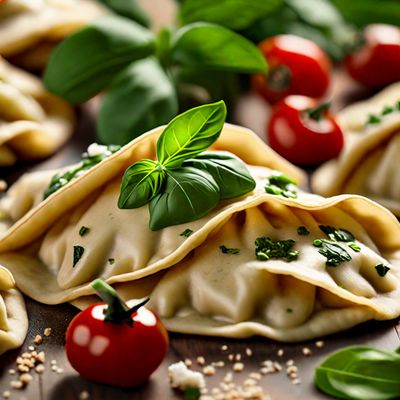
Dish
Pierogi
Pierogi is a versatile dish that can be filled with a variety of ingredients, including potatoes, cheese, sauerkraut, meat, or fruit. The dough is made with flour, water, and egg, and is rolled out thinly before being filled and boiled. Pierogi is often served with melted butter, sour cream, or fried onions. The dish is a staple of Polish cuisine and is enjoyed throughout the country.
Origins and history
Pierogi is a traditional Polish dish that has been enjoyed for centuries. The dish is often associated with holidays and special occasions, and is a symbol of Polish hospitality and tradition.
Dietary considerations
Pierogi is not suitable for those with gluten intolerance as the dough is made with wheat flour. It is also not suitable for those with nut allergies as some recipes call for the dumplings to be garnished with chopped nuts.
Variations
There are many variations of pierogi, including vegetarian versions filled with mushrooms or spinach, and sweet versions filled with fruit such as blueberries or strawberries. Some recipes also call for the dumplings to be fried instead of boiled.
Presentation and garnishing
Pierogi is traditionally served in a large communal dish, with the dumplings arranged in neat rows. The melted butter, sour cream, or fried onions are served on the side.
Tips & Tricks
To prevent the dumplings from sticking together during cooking, be sure to space them out evenly in the pot. You can also add a little bit of oil to the water to prevent the dumplings from sticking to the pot.
Side-dishes
Pierogi is often served with a side of sauerkraut or a simple salad of tomatoes and cucumbers. It can also be served with a bowl of soup.
Drink pairings
Pierogi pairs well with a glass of cold beer or a shot of vodka.
Delicious Pierogi recipes Browse all »

Pierogi with a Latin Twist
Empanadas de Pierogi: A Fusion of Polish and Latin Flavors

Indo-style Pierogi
Spiced Dumplings: Indo-style Pierogi

Channel Islands-inspired Stuffed Dumplings
Seaside Delights: Channel Islands-inspired Stuffed Dumplings

New Mexican Pierogi
Spicy and Savory Green Chile Pierogi

Molecular Gastronomy Pierogi
The Futuristic Twist on Traditional Polish Pierogi

Vegetarian Pierogi
Savory Stuffed Dumplings: Vegetarian Pierogi Delight

Greek-style Spinach and Feta Pierogi
Mediterranean Delight: Spinach and Feta Stuffed Greek Pierogi

Vietnamese-style Pierogi
Banh Xeo-inspired Pierogi: A Fusion of Polish and Vietnamese Flavors

Cuban-inspired Pierogi
Havana Pierogi Fiesta

Mediterranean-style Stuffed Dumplings
Sun-kissed Stuffed Dumplings: A Mediterranean Twist on Pierogi
More dishes from this category... Browse all »

Afghan mantu
Afghan cuisine

Age gyoza
Japanese cuisine

Ajdovi krapi
Slovenian cuisine

Ajdovi štruklji
Slovenian cuisine

Alivongvong
Lao cuisine

Amadombolo
South African cuisine

Aushak
Afghan cuisine

Ba wan
Taiwanese cuisine
